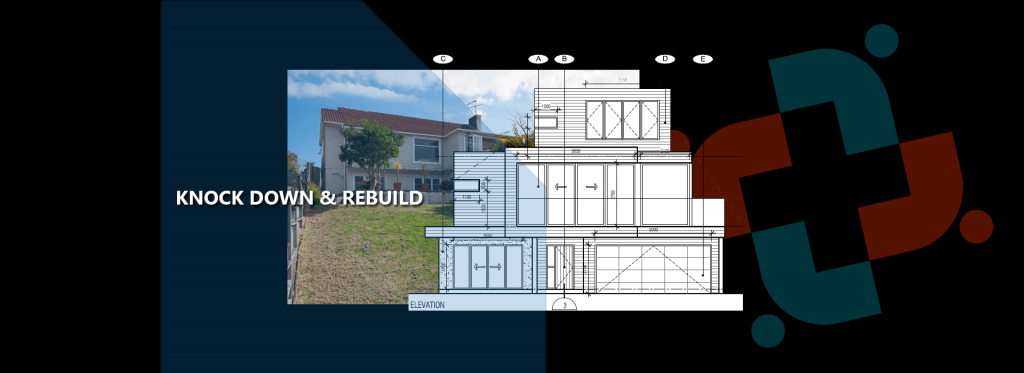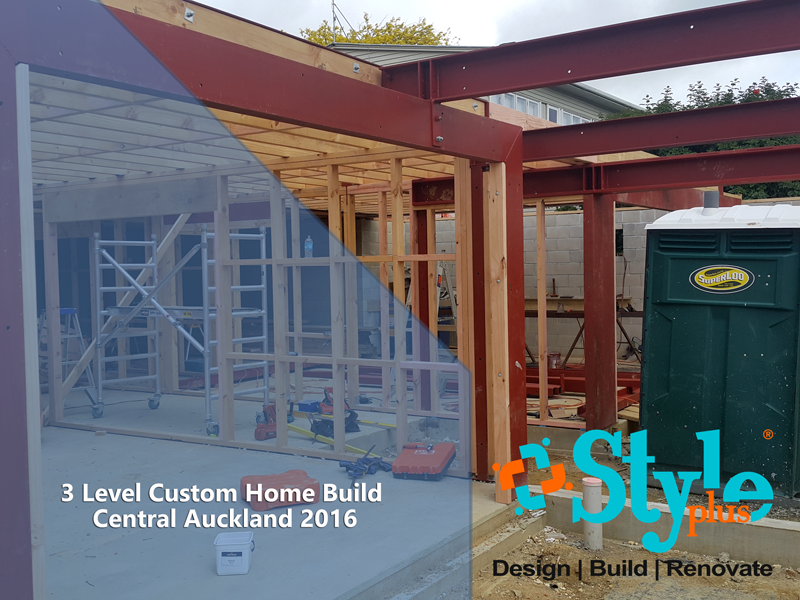STAGES OF A NEW CUSTOM HOME BUILD
Although every custom home-building project is unique, there are several essential stages that need to be completed to ensure a successful outcome.
If you are looking to build, understanding these stages will help you navigate the process and ensure that your project is built correctly.
The details are not the details. They make the design.
Charles Eames
Table of Contents
IDENTIFY THE SITE YOU WOULD LIKE TO BUY
Finding the perfect block of land to purchase is a crucial first step in the entire process, one that requires careful consideration and should not be rushed.
It’s important to locate a plot of land that not only aligns with your envisioned home design but also suits your family’s structural and lifestyle requirements.
When you come across a desirable location, take the time to identify and evaluate the available blocks, as this will enable you to uncover any potential land-related issues that may affect the design and construction of your home, possibly resulting in additional costs.
The purchase of a block of land for your new custom home involves a multitude of variables that must be taken into account. Factors such as the shape and size of the land, its slope, orientation, and soil composition play vital roles in determining its suitability.
Typically it is advisable to engage the expertise of a builder early on in this stage.
By involving a builder, you can tap into their knowledge and experience, allowing them to provide valuable guidance and ensure that the block of land you ultimately purchase will facilitate the construction of your desired home in a cost-effective manner.
DOES THE BLOCK OF LAND HAVE AN EXISTING STRUCTURE?
The presence of an existing structure on the block of land can add a layer of complexity and cost to the site selection process. It often leads to a multitude of considerations that warrant careful evaluation.
It’s not an unusual scenario to acquire a site that already has a dwelling. In such cases, it is important to consider the implications it may have on your custom home build project.
While the prospect of tearing down the existing structure remains feasible, it is important to acknowledge that this course of action can potentially extend your project timeline and increase your costs.
Additionally, a tear-down might impose certain restrictions on the placement options available for your new home.
Therefore, it becomes essential to thoroughly consider these factors and make informed decisions that align with your vision, objectives and budget.
Also, check out our article on ‘knock down rebuild‘ – building your custom home on your current property.

BUDGET AND FINANCIAL FEASIBILITY
When it comes to beginning your path of a custom home build, there are two critical elements that must be considered: budget and financial feasibility. The two elements play a pivotal role in shaping the overall outcome of your project.
Before entering into the complexities of the construction process, it is critical to have a basic concept of your budgetary constraints. To do so, engage with specialists such as your accountant, lender, or Bank to thoroughly evaluate the viability of your financial desired outcomes and develop a detailed budget.
While it may be tempting to rely solely on the amount that the bank is willing to lend you, it is important to exercise prudence and assess what you can comfortably afford.
It is crucial to be realistic and considerate of your financial limitations when setting the budget for your custom home. It is wise to bear in mind that there may be additional costs that emerge during the construction process.
To account for such unforeseen circumstances, it is recommended to incorporate a contingency budget to ensure that you are adequately prepared to handle any unexpected expenses that may arise.
By approaching the financial aspect of your custom home construction project with attentiveness and diligence, you can effectively navigate the intricate path of budgeting and secure the financial stability needed to bring your dream custom home to life.
FINDING A TEAM TO HELP YOU DESIGN AND BUILD
When starting on the journey of designing and constructing your dream custom home, one crucial step awaits: finding a capable team that will bring your vision to life.
The process of a custom home build begins to evolve as you search for a team that reflects trust and confidence in their ability to design and build your dream custom home.
If you are looking to create a custom home that is truly unique, starting from the ground up, it is important to explore the services offered by experienced custom home builders.
The choice to start a custom home build project requires careful feasibility evaluation. The design and layout you envision must seamlessly integrate with the real-world demands of construction.
By opting for custom home builders, you allow an ideal interaction between the architect, builder and project manager to develop a bespoke house that reflects both your individuality and your preferred lifestyle while maintaining a benchmark of quality workmanship.

CUSTOM HOME BUILD DESIGN
Now that you have established your site location, financial plan, and team, you can confidently proceed with the design of your custom home!
For the design phase, we suggest that you proceed with caution since the design process is critical to guaranteeing a flawless conclusion for your new home. Devote enough time and effort to doing things right from the start, and you’ll save yourself a lot of trouble in the long run.
One of the most notable advantages of constructing a custom home is the opportunity to fashion a space that perfectly suits your family’s lifestyle, rather than conforming to the layout of an existing design.
You have the opportunity of selecting every feature, from the number of rooms to the kitchen fixtures, granting you complete control over every intricate detail. However, remember to consider both your present and future needs.
Listed below are several key aspects you should carefully consider and communicate to your architect/designer during the creation of your personalised home design:
- Specify your requirements, aspirations, preferences, and exclusions.
- Determine the size of your home, including the number of rooms and stories.
- Define your preferred design style and aesthetic.
- Are there any specific features or products that you would love to incorporate?
- Which aspects of your lifestyle do you want your home to accommodate?
- Outline the structural elements that you desire for each room.
Lastly, prioritise your desired features in order of importance. Custom home build prices can vary significantly, so establishing your priorities will assist in adhering to your budget and making any difficult choices later in the process!
PREPARING THE BUILD CONTRACT
At this stage, the realisation of your custom home build begins to take shape!
After the design phase reaches its conclusion and you sign off with the layout and choices, your builder will create a comprehensive (Build) contract that encompasses every aspect of the project.
The custom home build contract typically includes an itemised breakdown of costs, insurance provisions, estimated project timeline, and the specific personal preferences you have communicated for your custom build home.
The building company you engage with will also manage the whole build phase of the contract, including:
- Supplying all the materials
- Hiring subcontractors like the plumber, electrician, roofer etc…
- Liaising with the architect/designer and engineer.
- Arranging council inspections.
WHAT CUSTOM HOME BUILD STAGES CAN LOOK LIKE
The build phases/tasks for a custom home build depend on the scope of the project as every custom home build is unique. However, generally, there are typically certain phases/tasks for a build:
Concrete slabs are typically installed by initially preparing the foundation, which plays a vital role in maintaining the stability of the slab.
Trenches are excavated to create the foundation footing, and formwork is utilised to securely hold the concrete in position. Steel reinforcements are carefully positioned within the formwork to enhance structural integrity.
Additionally, in-slab plumbing pipes need to be placed and tested before the concrete pour.
Typically, the process can take anywhere from a few weeks to a few months. However, the duration depends on the size of the house, foundation type and weather conditions.
The concrete for the slab (and footing if combined) is poured, compacted, floated, and then mechanically steel trowelled to a level, smooth finish. The concrete is then cured by keeping the slab wet for seven days.
The next step is to begin to put wall and roof frames/trusses up. The timeline for the framing phase can vary hugely, and will depend on:
- Whether a framed subfloor is required.
- The materials being used.
- Whether the frame arrives partly preassembled.
- The size of the house and how many levels.
- The complexity of the frame.
- How many people are working on it?
- How experienced is the building team?
- The weather.
The time it takes to frame a custom new build can vary depending on the size and complexity of the building, the number of stories, the custom design requirements, and the availability of skilled builders. Generally, the framing phase can take a few weeks to a month.
The time it takes to install a new roof and gutters for a custom new build can vary depending on several factors, including the size and complexity of the roof, the type of roofing material being used, the availability of skilled roofers, and the weather conditions.
Generally, the installation process can take a few days to a week.
A lightweight, fire-retardant wall underlay is installed over the exterior framing. It is designed to keep water out while allowing water vapour to escape the wall cavity.
Depending on the size of the house, this could take one to two days.
Installation of windows and doors (inc. ranchsliders).
Depending on the quantity to be installed, this could take a week or more.
The rough-in electrical services into the framing, before the walls/ceilings are lined with GIB plasterboard. Also, any ducting for ventilation systems.
The rough-in plumbing/drainage phase may be included in the foundation preparation phase, although it is not always the case. During this phase, it is necessary to install the drains, vent pipes, and water lines. Additionally, all bathtubs, showers, or shower bases are also installed.
Depending on the size of the house, it normally takes a couple to a few days for wiring and plumbing services to be roughed in.
The cladding installation process involves attaching the chosen cladding material to the exterior walls of the building.
The time required for installation depends on the size and complexity of the building, the type of cladding material, and the experience of the installers. It can take a few weeks to a month for a team of skilled cladding installers or builders to complete the installation, considering factors such as the need for scaffolding, weather conditions, and any architectural details that require special attention.
The actual installation of insulation involves placing the insulation materials in the walls, ceilings, and in some cases the floors of the building.
The time it takes to install insulation in a new build in New Zealand can vary depending on the size and complexity of the project, the type of insulation being used, and the availability of skilled installers. Typically, the process can take a few days.
The time it takes to complete GIB fixing (installing plasterboard) and stopping (applying joint compound and finishing) can vary depending on the size of the area, the complexity of the project, drywall availability, and the skill level of the tradesperson.
Generally, the process can take several days to over a week to complete.
After completing the GIB plasterboard installation and stopping, the next step involves waterproofing the bathroom, laundry, kitchen, and powder room areas.
Depending on how many areas to waterproof, it can take two to four days.
Typically, for a medium-sized bathroom with full height and floor tiling it can take from 2 – 4 days. However, this depends on the size of the bathroom, the size of the tiles and if the shower is a wet area shower.
For a custom home build, there may be other areas of the house that may have tiled areas. This will potentially extend the timeline for this task.
When it comes to a custom new build, painting demands a significant amount of effort and time. For example, GIB walls need to be properly smoothed and primed before the actual painting process can begin. Also, trim (skirting and architraves) needs to be prepped before painting.
The time it takes to paint the interior and exterior cladding of a new build can vary depending on the size and complexity of the building, the number of rooms, the surface conditions, the desired finish, the availability of skilled painters, and the exterior, weather conditions. Generally, the painting process can take several weeks.
As the construction of the house nears completion, the chosen sub-trades will return to carry out the final installation of fittings and fixtures. For example, this includes the placement of toilets, taps and mixers, light switches, ceiling lights, external lights, hot water systems, electrical panels, and ventilation systems. Additionally, glass fixtures such as mirrors and shower glass/ glass doors are also installed during this stage.
Depending on the scope of the custom build it may take a week or more to complete.
The installation process typically involves assembling and fitting the cabinets, countertops, appliances, and other components of the custom kitchen. The duration of the installation can vary based on the size and complexity of the kitchen, as well as the experience and efficiency of the installation team.
The duration of the installation can range from a few days to a couple of weeks.
Also, once the main installation is complete, the finishing touches such as installing handles, adjusting doors and drawers, and making any necessary adjustments or modifications will be carried out. This stage may take a few additional days.
Installing carpet typically takes a day or two, depending on the size of the area and the number of rooms involved. This includes preparing the subfloor, laying the carpet underlay, and installing the carpet itself.
The installation of engineered flooring can take several days to a week or more, depending on the size and complexity of the project. This includes preparing the subfloor, fitting planks, and applying any required finishes or coatings. The installation time may increase if intricate patterns or designs are involved.
Once the door frames are installed, the doors can be fitted. This process involves hanging the doors on the hinges, ensuring they are aligned properly, and installing handles.
The time required for door fitting can vary based on the number of doors and the complexity of the installation. On average, it takes approximately 1-2 hours to fit a single internal door, including adjustments and any necessary trimming.
The practical completion phase of a new custom home build refers to the point at which the construction work is judged essentially complete and suitable for habitation or usage.
It is a significant milestone in the build process. The contractor or builder will do a thorough examination of the property during this phase to ensure that it fulfils the agreed-upon standards, specifications, and building codes.
During the practical completion phase, the building work is thoroughly assessed, including the installation of critical systems and services such as plumbing, electricity, and heating. It also entails inspecting all finishes, fittings, and fixtures, both inside and externally.
The practical completion certificate is normally provided on successful completion of the walk-through. This document recognises that the building work has progressed to the point where the house is virtually complete and suitable for occupancy. It also represents that the builder’s contractual duties have been met.
Minor problems or flaws may still need to be corrected after practical completion. These are usually documented in a defects liability period, during which the builder is responsible.
After the practical completion of the construction work, the builder can apply for a CCC from the local council. The council will conduct a final inspection to ensure that the building work meets the required standards and has been carried out in accordance with the approved plans and building consent.
CCC may take up to 4 weeks, although the actual timeframe can vary depending on the workload and processes of the specific council. The CCC is a crucial requirement before the handover of the property can take place.
Once the initial basic cleaning is complete, a more detailed cleaning process begins for a new custom home build. This involves cleaning surfaces, such as walls, floors, windows, and fixtures, to remove dust, smudges, and any remaining construction residue. It may also include cleaning the interior of cabinets, appliances, and other built-in features.
The time required for detailed cleaning depends on the size of the building, the number of rooms, and the complexity of the design. A team of skilled cleaners can typically complete this process in several days to a week, depending on the scope of work.
The time it takes to landscape a custom new build can vary significantly depending on the size of the property, the complexity of the design, the desired features, the time of year, and the availability of resources. Landscaping typically involves a combination of tasks such as site preparation, planting, constructing hardscapes, and installing irrigation systems.
The handover is a significant project milestone when you officially take possession of your new home. It marks the completion of the construction process and the transfer of ownership from the builder to the homeowner.
During the handover, you typically make the final payment to the builder, as outlined in the agreed-upon terms and conditions of the build contract
CUSTOM HOME BUILD INSPECTIONS
Alongside the mandatory code compliance inspections, your builder/project manager may also perform quality checks at crucial stages of the project.
The primary aim is to identify and address potential issues before the construction reaches completion, although certain problems may only manifest themselves after you have already resided in the home for a period of time.
By conducting regular inspections, both you and the council can have confidence that the construction work has been carried out in accordance with the approved plans/building consent.
The reason behind the council’s progressive inspections, rather than conducting them solely at the end, is to assess the exposed work during various stages.
For instance, if they were to inspect only the framing at the conclusion of the build, they would need to remove the interior wall linings in order to ensure its proper execution.
The specific inspections required will be detailed in your building consent, which is determined by the council’s assessment of your plans, specifications, and other relevant information. Depending on the nature of your project, these inspections may involve the presence of your designated engineer.
Common inspections for residential buildings can include:
- Pre-pour (before the concrete is poured, for example, for piles, footings, slabs, in situ walls or blockwork infill).
- Tanking/waterproofing (before back-filling retaining walls, covering membranes on decks or laying tiles in wet areas such as showers).
- Pre-clad (before wrapping the building in building paper or building wrap and installing the cladding such as weatherboards).
- Post-clad (before applying coatings to fibre cement or polystyrene systems, possibly including inspections during plastering).
- Pre-line (with insulation installed but before installing internal linings. This inspection may include checking the plumbing installation under pressure test).
- Drainage (before filling in trenches and covering the in-ground pipework). Pipework should be under test for this inspection. Drainage testing can include smoke, air or water testing.
- Final inspection for plumbing, building and drainage work (once the work described in the building consent is complete).
CUSTOM HOME BUILD FAQS
- How much does it cost to build a custom home in New Zealand?The cost of building a custom home can vary significantly based on factors such as the size, location, design complexity, quality of finishes, and site-specific requirements. It's advisable to consult with architects and builders to get accurate cost estimates based on your specific project.
- What are the warranties and guarantees for custom home builds in New Zealand?New Zealand has a range of warranties and guarantees to protect homeowners. Builders typically provide a 10-year warranty for structural defects. Certain building materials and products may also come with their own warranties, which you should discuss with your builder or supplier.
- Should I hire an architect or a design-build firm for my custom home?The choice between an architect and a design-build firm depends on your preferences and project requirements. Architects focus on design and planning, while design-build firms offer a one-stop solution by handling both the design and construction aspects. Consider your budget, desired level of involvement, and the complexity of your project before making a decision.
- Can I incorporate sustainable features into my custom home in New Zealand?Absolutely! New Zealand places a strong emphasis on sustainability, and you can incorporate various eco-friendly features into your custom home. These may include solar panels, rainwater harvesting systems, energy-efficient appliances, proper insulation, and passive design principles to maximize natural light and ventilation
- How do I start the process of building a custom home in New Zealand?To start the process, you should first identify your needs, budget, and preferred location. Then, consider engaging an architect or a design-build firm to help you create the plans and navigate the building consent process.
- Do I need a building consent for my custom home in New Zealand?Yes, building consent is generally required for new home construction in New Zealand. It ensures that your building plans comply with the building code and regulations. You'll need to submit your plans to the local council for approval before construction can begin.
- How long does it take to build a custom home in New Zealand?The duration of custom home builds can vary depending on various factors such as the complexity of the design, the size of the home, weather conditions, and the availability of contractors. Generally, it can take anywhere from several months to over a year to complete a custom home.
At Style Plus Renovations, we understand that the custom home build process can be long and involved, but with the right design & build builder, it can become a rewarding and enjoyable experience. At Style Plus Renovations, we prioritise listening to your goals and placing your needs at the forefront.
Whether you have specific design preferences, or unique requirements, or simply want to explore the possibilities of building a custom home, we are here to guide you. Our goal is to create a home that reflects your individual style, meets your functional needs, and provides a space where you can thrive.
Please don’t hesitate to reach out to us. We look forward to hearing from you and discussing how we can bring your dream home to reality.
Whilst all information is considered to be true and correct at the date of publication, changes in circumstances after the time of publication may impact the accuracy of the information.
The information may change without notice and Style Plus Renovations is not in any way liable for the accuracy of any information printed and stored or in any way interpreted and used by a user.
Get started with a Free
Architects Renovation Feasibility Report
LET'S START
YOUR RENOVATION PROJECT
Tel us about your renovation project and we’ll call you back for a no-obligation chat about your ideas.
Alternatively, if you prefer, we can initially set up a meeting using Microsoft Teams or Zoom (and other meeting apps) for a no-obligation chat about your ideas.
We look forward to hearing from you to discuss your project and get you started on your renovation journey.
If you would like to know more about our renovation process, check it out here.


